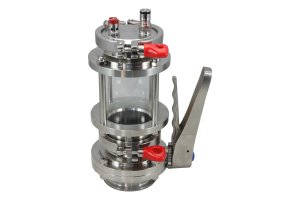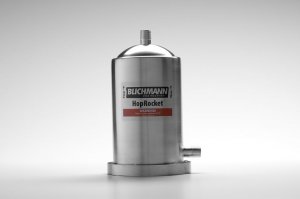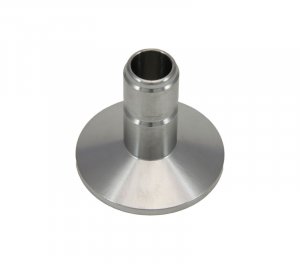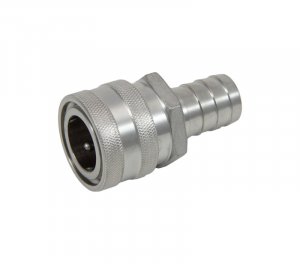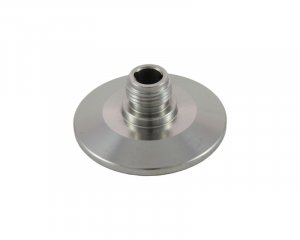-
Tri Clamp Compatible Fittings
- Tri Clamp Compatible X NPT Adapters
- Tri Clamp Compatible X Hose Barb Adapters
- Tri Clamp Compatible X Cam & Groove Adapters
- Tri Clamp Compatible X Quick Disconnect Adapters
- Tri Clamp Compatible X Beer Thread Adapters
- Tri Clamp Compatible X Garden Hose Thread adapters
- Tri Clamp Compatible X Corny Post Thread Adapter
- Tri Clamp Compatible X Compression Adapters
- Tri Clamp Compatible X Flare Adapters
- Tri Clamp Compatible X BSP Adapters
- Tri Clamp Compatible Clamps
- Tri Clamp Compatible Gaskets
- Tri Clamp Compatible Valves
- Tri Clamp Compatible Ferrules
- Tri Clamp Compatible Caps
- Tri Clamp Compatible Elbows
- Tri Clamp Compatible Tees
- Tri Clamp Compatible Wyes
- Tri Clamp Compatible Crosses
- Tri Clamp Compatible Sight Glasses
- Tri Camp Compatible Concentric Reducers
- Tri Clamp Compatible Eccentric Reducers
- Tri Clamp Compatible Cap-Style Reducers
- Tri Clamp Compatible Spools
- Tri Clamp Compatible Check Valves
- Tri Clamp Compatible PRV Tank Breathers
- Tri Clamp Compatible Pressure Gauges
-
Shop By Size
- 1/2"-3/4" Tri Clamp Compatible Fittings
- 1"/1.5" Tri Clamp Compatible Fittings
- 2" Tri Clamp Compatible Fittings
- 2.5" Tri Clamp Compatible Fittings
- 3" Tri Clamp Compatible Fittings
- 4" Tri Clover Compatible Fittings
- 6" Tri Clover Compatible Fittings
- 8" Tri Clover Compatible Fittings
- 10" Tri Clover Compatible Fittings
- 12" Tri Clover Compatible Fittings
- Brewery Controllers
- Brew Stands & Systems
- Brewing Kettles & Hop Filters
- Burners & Accessories
- Cam & Groove Fittings
- Carbonation Stones
- Conicals & Accessories
- CIP Spray Balls
- Custom Welding
- Fermentor Kits
-
Gaskets
- 1/2" & 3/4" Tri Clamp Compatible Gaskets
- 1"/1.5" Tri Clamp Compatible Gaskets
- 2" Tri Clamp Compatible Gaskets
- 2.5" Tri Clamp Compatible Gaskets
- 3" Tri Clamp Compatible Gaskets
- 4" Tri Clamp Compatible Gaskets
- 6" Tri Clamp Compatible Gaskets
- 8" Tri Clamp Compatible Gaskets
- 10" Tri Clamp Compatible Gaskets
- 12" Tri Clamp Compatible Gaskets
- Kegging Equipment/Accessories
- Modular Return System
- O-Rings
- Pumps
- Quick Disconnect Fittings
- RIMS Tubes & Electric Brewing
- Thermowells
- Stainless Tubing
- Threaded Fittings
- Temperature Probe Components
- Temperature Sensors
- Wort Strainers
- Tubing/Hose
- Weldless Fittings
- Merch
- Clearance
- Anvil Brewing
- Blichmann Engineering
- Five Star Chemicals
- Penguin Chillers
- Tapcooler Bottle Filler & Accessories
Blichmann HopBlocker
BLICH-aHopBlocker
Blichmann HopBlocker
Ships directly from the manufacturer via FedEx so please allow 1-2 weeks for delivery.
Because it is drop shipped, it cannot be expedited.
Description from Blichmann Engineering:
The HopBlocker is designed for use with pellet hops only. Whole/loose hops will plug the unit. While using whole hops, or a mix of whole and pellet hops, you must bag your whole hops in a large muslin grain bag. This will not affect the utilization rate and will result in significantly less wort loss.
Traditional screen filters draw from the bottom of the kettle — immediately sucking all pellet hops and fine break material into the screen, where they plug. In Blichmann Engineering's HopBlocker™, preferential flow leaves settled fine break material (hops and trub) undisturbed at the bottom of the kettle while draining the majority of the wort through a coarse filter from the top down. When the wort level is just a couple of inches from the bottom of the kettle, the fine filter element is then exposed by lifting the shield, and the remainder of the wort is filtered. It's an intuitive design that allows the fine filter to work only on a small portion of the wort, not all of it. The HopBlocker™ will filter up to 95% of the break material and hops from your wort without plugging. While it is designed specifically to complement Blichmann Engineering's BoilerMaker™ brew kettles, the HopBlocker™can be installed in any manufacturer's kettle or keg.
NOTE: The HopBlocker is designed for use with pellet hops only. Whole/loose hops will plug the unit. While using whole hops, or a mix of whole and pellet hops, you must bag your whole hops in a large muslin grain bag. This will not affect the utilization rate and will result in significantly less wort loss.
THE PROCESS IS UNIQUE, BUT SIMPLE
1. Install the HopBlocker™ into the kettle using the snap-in dip tube. This takes only a few seconds.
2. Ensure that the shield is pushed all the way to the bottom of the screen and that the HopBlocker™ is resting flat on the bottom of the kettle. Proceed with your boil as you normally do. The HopBlocker™ may move a bit during the boil, but this is not a problem. It will automatically right itself.
3. At flameout, vigorously stir the wort with a paddle to create a whirlpool. This encourages the hops and trub particulates to settle to the center of the kettle, away from the HopBlocker™.
4. Allow 15 to 20 minutes for thermal convection currents to slow and allow the break material and hop particulates to settle.
5. Drain your pot as fast as you'd like until you see the top of the kettle drain fitting (about 3 inches of wort).
6. Reduce the drain flow rate to about one-third of the initial flow rate. This allows the wort to slowly permeate through the hops and trub without dragging them to the filter where it may plug.
7. Use your paddle to hold the filter down and quickly pull the shield up with a gloved finger or a racking cane to expose the fine filter on the bottom of the HopBlocker™. It is important to quickly complete steps 6 and 7 so you do not lose the siphon, which will stop the flow.
WHOLE HOPS RECOMMENDATIONS
Loose leaf hops generally plug the coarse screen. Therefore, we highly recommend using large muslin grain bags to avoid plugging. In addition, you lose a large amount of wort from leaf-hops absorption. Using a bag, you can squeeze most of the wort out with negligible effect on hop utilization and significantly easier cleanup. This method does not work for pellet hops because they pass through openings in the muslin bag. And finer mesh screens do not freely allow wort to pass so hop utilization is negatively affected.







